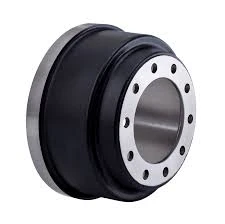
-
 Afrikaans
Afrikaans -
 Albanian
Albanian -
 Amharic
Amharic -
 Arabic
Arabic -
 Armenian
Armenian -
 Azerbaijani
Azerbaijani -
 Basque
Basque -
 Belarusian
Belarusian -
 Bengali
Bengali -
 Bosnian
Bosnian -
 Bulgarian
Bulgarian -
 Catalan
Catalan -
 Cebuano
Cebuano -
 Corsican
Corsican -
 Croatian
Croatian -
 Czech
Czech -
 Danish
Danish -
 Dutch
Dutch -
 ଇଂରାଜୀ |
ଇଂରାଜୀ | -
 Esperanto
Esperanto -
 Estonian
Estonian -
 Finnish
Finnish -
 French
French -
 Frisian
Frisian -
 Galician
Galician -
 Georgian
Georgian -
 German
German -
 Greek
Greek -
 Gujarati
Gujarati -
 Haitian Creole
Haitian Creole -
 hausa
hausa -
 hawaiian
hawaiian -
 Hebrew
Hebrew -
 Hindi
Hindi -
 Miao
Miao -
 Hungarian
Hungarian -
 Icelandic
Icelandic -
 igbo
igbo -
 Indonesian
Indonesian -
 irish
irish -
 Italian
Italian -
 Japanese
Japanese -
 Javanese
Javanese -
 Kannada
Kannada -
 kazakh
kazakh -
 Khmer
Khmer -
 Rwandese
Rwandese -
 Korean
Korean -
 Kurdish
Kurdish -
 Kyrgyz
Kyrgyz -
 Lao
Lao -
 Latin
Latin -
 Latvian
Latvian -
 Lithuanian
Lithuanian -
 Luxembourgish
Luxembourgish -
 Macedonian
Macedonian -
 Malgashi
Malgashi -
 Malay
Malay -
 Malayalam
Malayalam -
 Maltese
Maltese -
 Maori
Maori -
 Marathi
Marathi -
 Mongolian
Mongolian -
 Myanmar
Myanmar -
 Nepali
Nepali -
 Norwegian
Norwegian -
 Norwegian
Norwegian -
 Occitan
Occitan -
 Pashto
Pashto -
 Persian
Persian -
 Polish
Polish -
 Portuguese
Portuguese -
 Punjabi
Punjabi -
 Romanian
Romanian -
 Russian
Russian -
 Samoan
Samoan -
 Scottish Gaelic
Scottish Gaelic -
 Serbian
Serbian -
 Sesotho
Sesotho -
 Shona
Shona -
 Sindhi
Sindhi -
 Sinhala
Sinhala -
 Slovak
Slovak -
 Slovenian
Slovenian -
 Somali
Somali -
 Spanish
Spanish -
 Sundanese
Sundanese -
 Swahili
Swahili -
 Swedish
Swedish -
 Tagalog
Tagalog -
 Tajik
Tajik -
 Tamil
Tamil -
 Tatar
Tatar -
 Telugu
Telugu -
 Thai
Thai -
 Turkish
Turkish -
 Turkmen
Turkmen -
 Ukrainian
Ukrainian -
 Urdu
Urdu -
 Uighur
Uighur -
 Uzbek
Uzbek -
 Vietnamese
Vietnamese -
 Welsh
Welsh -
 Bantu
Bantu -
 Yiddish
Yiddish -
 Yoruba
Yoruba -
 Zulu
Zulu
disc and drum brake difference
The Differences Between Disc and Drum Brakes
When it comes to automotive braking systems, two primary types are commonly used disc brakes and drum brakes. Both systems have their merits and demerits, and understanding these can help vehicle owners make informed decisions about maintenance, repair, and upgrades.
Basic Structure
Disc brakes consist of a flat, circular metal disc, which is attached to the wheel. When the brake pedal is pressed, hydraulic pressure pushes brake pads against the disc, generating friction that slows down or stops the vehicle. In contrast, drum brakes feature a cylindrical drum that rotates with the wheel. Inside the drum, brake shoes press outward against the inner surface to create friction.
Performance and Efficiency
One of the most significant differences between disc and drum brakes is their performance under different conditions. Disc brakes tend to perform better in wet and muddy conditions. Because they are more exposed compared to drum brakes, they dry out faster when wet, maintaining consistent braking efficiency. Drum brakes, however, can experience what is known as “brake fade” when they overheat, as heat can build up inside the drum, reducing their effectiveness.
Moreover, disc brakes provide better stopping power and more responsive braking, especially during emergency situations. This is partly due to their larger surface area, which allows for more heat dissipation. Disc brakes also tend to self-adjust better than drum brakes, which can lead to improved performance over time.
Maintenance and Durability
disc and drum brake difference

When considering maintenance, disc brakes generally require less frequent servicing than drum brakes. The design of disc brakes allows for easier inspection and replacement of worn parts. Brake pads are straightforward to access, so vehicle owners can often change them without comprehensive disassembly. Drum brakes, on the other hand, are encased, making it more complicated to service. This complexity can lead to higher labor costs and longer repair times.
However, drum brakes tend to be more durable in terms of wear and tear under low to moderate braking conditions. For vehicles that do not require heavy braking frequently, such as small cars or those used predominantly for city driving, drum brakes can offer a cost-effective solution.
Weight and Cost
When it comes to the production cost, drum brakes are generally less expensive than disc brakes. This is one reason why they are still commonly used in economy vehicles. They typically weigh less than their disc counterparts, contributing to the overall weight efficiency of the vehicle. However, as performance vehicles continue to dominate the market, many manufacturers are opting for disc brakes due to their superior performance characteristics.
Application in Vehicles
Disc brakes have become the preferred choice for high-performance cars, sports cars, and most modern vehicles, particularly at the front. Many vehicles use a combination of both systems, utilizing drum brakes at the rear for economic reasons and disc brakes at the front for better stopping power. Larger vehicles, such as trucks and SUVs, often use disc brakes on all four wheels due to their increased braking demands.
Conclusion
In summary, the choice between disc and drum brakes boils down to performance needs, maintenance preferences, and vehicle application. While disc brakes are often acknowledged for their superior performance, especially in challenging conditions, drum brakes still hold their ground in specific scenarios due to their cost-effectiveness and durability. Understanding these differences can help car owners and drivers appreciate the technology behind their vehicles and make better choices for maintenance and upgrades.
-
Why Choosing the Right Brake Drum Manufacturer Matters for Vehicle Safety and Performanceସମ୍ବାଦJun.05,2025
-
Understanding Heavy Duty Brake Drums: Key to Truck Safety and Performanceସମ୍ବାଦJun.05,2025
-
Reliable Braking Systems: Rear and Trailer Drum Brake Solutions for Heavy-Duty Applicationsସମ୍ବାଦJun.05,2025
-
Power and Precision: Why Brake Drums Still Dominate in Vehicle Safety Systemsସମ୍ବାଦJun.05,2025
-
Brake Drums: Essential Components for Vehicle Safety and Performanceସମ୍ବାଦJun.05,2025
-
Superior Brake Drums & Rotors for Reliable Stopping Powerସମ୍ବାଦJun.03,2025
-
Premium Brake Drums for Maximum Stopping Powerସମ୍ବାଦJun.03,2025
